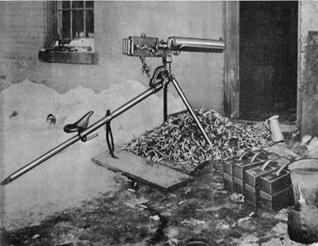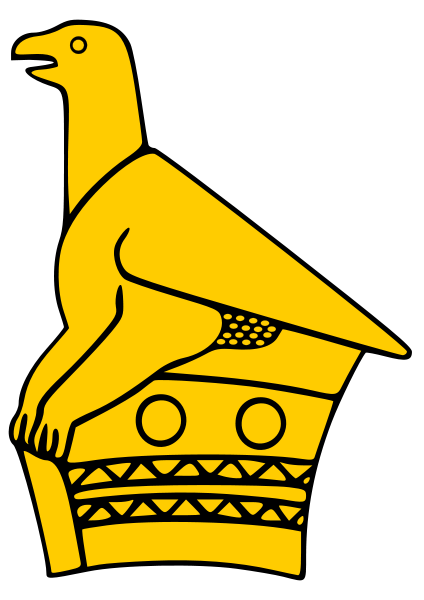Pioneer Days
Main Types of Weapons Used During the War
This section covers Colonial, Shona and Matabele Weapons and relies on Nyathi (2000, 2009), Ellert (1984), Sykes (1897), Hughes & Summers (1955) and various web sources.
Martini-Henry Rifle
The Martini-Henry Rifle is a weapon of Empire. Unlike the Snider-Enfield it replaced, it was England's first service rifle designed from the ground up as a breechloading metallic cartridge firearm. It served the British Empire and her overseas territories for over 30 years. This robust weapon utilized a falling block, self-cocking, lever operated, single-shot action designed by Friedrich von Martini of Switzerland. The barrel used the Henry Rifling System, designed by Alexander Henry. Henry Peabody, an American, was actually the father of the Martini action. His design utilized an external hammer to strike a firing pin for cartridge ignition. Later in the British Martini's career, other rifling patterns such as the Metford System and even a system devised at Enfield were adopted and it is common to hear these weapons also referred to as Martini-Enfields or Martini-Metfords. The first Martini adopted for service in the British Army was the M-H Mark I, which entered service in June of 1871. There were an additional three main variations of the Martini-Henry Rifle: Mark II, III and IV. There were also sub variations of these that are commonly called Patterns.

The Martini-Henry stood up to intensive service right away. In 1879, At Rourke's drift during the Anglo-Zulu war, 139 British troopers expended close to 20,000 rounds in defense of their mission. The earlier defeat at Isandlwana seems to focus on ammunition shortages, not any problems with the rifles. The rifle was in service for 30 years and some units still used them into WWI.
Other Rifles
Rifles of so many varieties were used by both sides in 1896, ranging from ancient muzzle-loaders to modern Sniders. Zvigidi (chigidi) were prized possessions, Shona knock-offs of European rifles using home-made gunpowder brewed from concentrated dassie urine and charcoal dust. Thy had a devastating effect often being loaded with a variety of projectiles including fragments of quartz, pot legs, stones and pebbles encased in lead and even bits of glass and stoppers from soda bottles. There are even reports of the Matabele manufacturing their own guns (umbhobho womgqitshwa) comprising a length of steel tube attached to a wooden stock, joined by shrunken hide (Ellert 1984: 58).
The Maxim Gun
The Maxim gun was the first self-powered machine gun, invented by inventor Sir Hiram Maxim in 1884. Maxim was reported to have said: "In 1882 I was in Vienna, where I met an American whom I had known in the States. He said: 'Hang your chemistry and electricity! If you want to make a pile of money, invent something that will enable these Europeans to cut each others' throats with greater facility.'" As a child, Maxim had been knocked over by a rifle's recoil, and this inspired him to use that recoil force to automatically operate a gun. Between 1883 and 1885 Maxim patented gas, recoil and blow-back methods of operation. The gun was chambered for the .45 British service round.

The first British use of the new gun was the Matabele War of 1893; this was quite possibly the first ever use of this type of weapon in modern warfare. Irregular troops, police and volunteers faced off against the Matabele, and fought from wagon laagers, usually with Maxim guns on the corners. The results were devastating and the gun was quickly added to the standard colonial arsenal.
Maxim moved to a factory in London, and soon merged with the Nordenfelt firm, to become the Maxim Nordenfelt Gun and Ammunition Factory. This was absorbed by the Vickers Company in 1897, who had been an investor in Maxim's company since the beginning. His invention was redesigned as the Vickers Machine Gun, the staple of the British army for many years.
Maxim is also credited with inventing the common mousetrap and, as a long-time sufferer from bronchitis, he also patented and manufactured a pocket menthol inhaler and a larger "Pipe of Peace", a steam inhaler using pine vapour, that he claimed could relieve asthma, tinnitus, hay fever and catarrh. After being criticised for applying his talents to “quackery,” he protested that: "it will be seen that it is a very creditable thing to invent a killing machine, and nothing less than a disgrace to invent an apparatus to prevent human suffering".
Other Machine Guns
The Rhodesians made use of other types of machine guns during the war as well. In general military authorities were deeply mistrustful of automatic weapons which were claimed to misfire at crucial junctures in a battle. This may explain the variety favoured by military authorities in 1896. One choice, perhaps a relic from the 1890 Pioneer Column, was the Nordenfelt Gun was a multiple barrel machine gun that had a row of up to twelve barrels. It was fired by pulling a lever back and forth. This was not a slow-firing weapon; during a demonstration a ten-barrelled version of the weapon, firing rifle calibre bullets fired 3,000 rounds of ammunition in 3 minutes and 3 seconds without stoppage or failure. However, with the development of the Maxim gun the weapon was eventually outclassed and fell into disuse.
Another relic was the Gardner gun another early mechanical machine gun. It had one or two barrels, was fed from a vertical magazine or hopper and was operated by a crank. When the crank was turned, a feed arm positioned a cartridge in the breech, the bolt closed and the weapon fired. Turning the crank further opened the breechblock and extracted the spent casing. It was invented in 1874 by William Gardner of Toledo, Ohio formerly a Captain in the Union army during the American Civil War. After producing a prototype he went to the Pratt and Whitney company, who after a year of development produced a military version of the weapon. The Americans were not interested in the weapon so the British Royal Navy stepped in and Gardner began production there, selling also to the British Army.
Sourced from the Zanj Financial Network 'Zfn', Harare, Zimbabwe, email briefing dated ? 2011


 South Devon Sound Radio
South Devon Sound Radio Museum of hp Calculators
Museum of hp Calculators Apollo Flight Journal
Apollo Flight Journal Apollo Lunar Surface Journal
Apollo Lunar Surface Journal Cloudy Nights Classic Telescopes
Cloudy Nights Classic Telescopes The Savanna - Saffer Shops in London
The Savanna - Saffer Shops in London Linux Mint
Linux Mint Movement for Democratic Change
Movement for Democratic Change